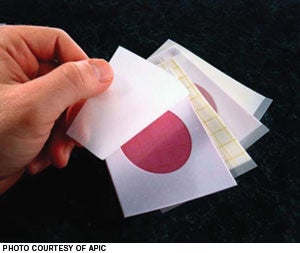Test method uncovers bacteria in hospital beds
 |
| Film plates are effective at detecting patien bed bacteria. |
The use of film plates is more effective than traditional methods in testing for potentially harmful bacteria in hospital beds.
That was a key finding in a study presented at the recent annual Association for Professionals in Infection Control and Epidemiology (APIC) conference in Baltimore.
Edmond A. Hooker, M.D., associate professor of health services administration, Xavier University, Cincinnati, led the study to find an effective method of determining the cleanliness of hospital bed mattresses and decks. It also attempted to determine if current cleaning practices are adequate.
The study, conducted at five hospitals in four cities, showed that more than 85 percent of hospital beds tested with film plates were determined to have bacteria regardless of whether they had been cleaned by housekeeping staff, Hooker says.
The film plates identified growth on more than twice as many mattresses as did rayon-tipped swabs, which were used to test the same areas on the same beds. Hooker says the swabs are a common method to test for bacteria on hospital beds.
The research reinforces the concerns of many physicians, infection control officers and others that hospital beds harbor bacteria and other microorganisms even after terminal disinfection, Hooker says. Hospitals may need to reevaluate the time spent cleaning patient rooms and the thoroughness of the work, he adds.


